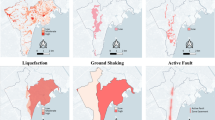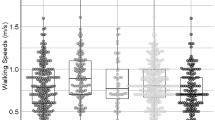Abstract
A multi-agent evacuation model is proposed in this paper to simulate the pedestrian evacuation process in stadium with or without obstacles. The authors give a multi-agent individual decision-making framework, in which the action direction of each pedestrian (called agent) is affected by the distance of the agent to the exits and the occupant number and density within the view field of the agent. Different from the existing results, the authors divide all the pedestrians in the stadium into four classes: Young male, young female, old male, and old female. In evacuation process, the weighting that affects individual decision-making between each class of agents is different. In the simulation, the authors present the effects of obstacles, crowd distribution and the exit position in evacuation process. Simulation results show that the proposed model can reproduce exactly the real evacuation process in stadium. Therefore, this method might be useful to assess public buildings design.
Similar content being viewed by others
References
Hughes R, A continuum theory for the flow of pedestrians, Transportation Research, Part B, 2002, 36(6): 507–535.
Huang L, Wong S, et al., Revisiting Hughes’s dynamics continuum model for pedestrian flow and the development of an efficient solution algorithm, Transportation Research, Part B, 2009, 43(1): 127–141.
Helbing D and Molnar P, Social force model for pedestrian dynamics, Physical Review E, 1995, 51(5): 4282–4286.
Helbing D, Farkas I, and Vicsek T, Simulating dynamical features of escape panic, Nature, 2000, 407: 487–490.
Lakoba T and Kaup D, Modifications of the Helbing-Molnar-Farkas-Vicsek social force model for pedestrian evolution, Simulation, 2005, 81(5): 339–352.
Zainuddina Z and Shuaiba M, Modification of the decision-making capability in the social force model for the evacuation process, Transport Theory and Statistical Physics, 2011, 39(1): 47–70.
Guo R and Huang H, A mobile lattice gas model for simulating pedestrian evacuation, Physica A, 2008, 387: 580–586.
Alizadeh R, A dynamic cellular automaton model for evacuation process with obstacles, Safety Science, 2011, 49: 315–323.
Varasa A, Cornejoa M, et al., Cellular automaton model for evacuation process with obstacles, Physica A, 2007, 382: 631–642.
Burstedde C, Klauck K, Schadschneider A, et al., Simulation of pedestrian dynamics using a two dimensional cellular automaton, Physica A: Statistical Mechanics and Its Applications, 2001, 295(3–4): 507–525.
Zheng Y, Jia B, Li X, et al., Evacuation dynamics with fire spreading based on cellular automaton, Physica A: Statistical Mechanics and Its Applications, 2011, 390(18–19): 3147–3156.
Zheng X, Li W, and Guan C, Simulation of evacuation processes in a square with a partition wall using a cellular automaton model for pedestrian dynamics, Physica A, 2010, 389(11): 2177–2188.
Fang Z, Li Q, et al., A proposed pedestrian waiting-time model for improving spaceetime use efficiency in stadium evacuation scenarios, Building and Environment, 2011, 46: 1774–1784.
Guo R and Huang H, Logit-based exit choice model of evacuation in rooms with internal obstacles and multiple exits, Chin. Phys. B, 2010, 19(3): 030501.
Author information
Authors and Affiliations
Corresponding author
Additional information
This research is supported by the National Natural Science Foundation of China under Grant No. 61203142, the Natural Science Foundation of Hebei Province under Grant No. F2014202206, and the Project-Sponsored by SRF for ROCS, SEM.
This paper was recommended for publication by Editor HAN Jing.
Rights and permissions
About this article
Cite this article
Zhang, L., Wang, J. & Shi, Q. Multi-agent based modeling and simulating for evacuation process in stadium. J Syst Sci Complex 27, 430–444 (2014). https://doi.org/10.1007/s11424-014-3029-5
Received:
Revised:
Published:
Issue Date:
DOI: https://doi.org/10.1007/s11424-014-3029-5




